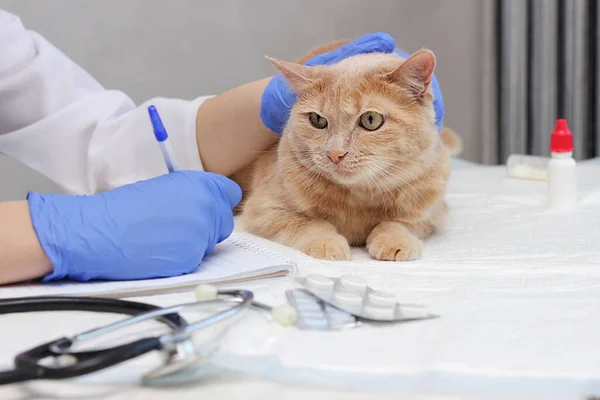The Importance Of Wellness Tests For Your Cat! – Regular wellness exams are critical to keeping your cat healthy and happy. Like humans, cats need routine checkups to catch any potential health issues before they become serious problems. During a wellness exam, a veterinarian will examine your cat’s overall health, including their eyes, ears, teeth, heart, lungs, and skin. They may also run tests to check for any underlying health conditions or diseases affecting your cat’s health. You can work with your veterinarian to develop a treatment plan and prevent potential complications by catching any issues early on.
Your veterinarian will likely recommend that your cat receive certain vaccinations or parasite preventatives, depending on their age, lifestyle, and health status. In addition to preventing health issues, wellness exams can help you stay current on your cat’s preventative care. Regular checkups also allow you to discuss any behavior or dietary concerns you may have with your veterinarian. They can advise on managing certain behaviors or recommend dietary changes that may benefit your cat’s health.
Moreover, wellness exams allow you to build a relationship with your veterinarian. By scheduling regular appointments, you can work with your veterinarian to develop a personalized care plan for your cat that meets its unique needs. Your veterinarian can also advise how to keep your cat healthy and happy between appointments. By building a relationship with your veterinarian, you can ensure that your cat receives the best possible care.
How many times a year should you take your cat to the vet?
As a general guideline, it’s recommended that cats receive a checkup with a veterinarian at least once a year. However, your cat’s frequency of veterinary visits may vary depending on age, health status, and lifestyle.
Kittens will require more frequent visits in the first year of life for vaccinations, deworming, and spay/neuter surgery. Older cats may also require more frequent checkups, especially if they have any ongoing medical conditions or age-related health concerns.
In addition to annual checkups, you must take your cat to the vet if you notice any changes in their behavior, appetite, or litter box habits, as these can be signs of underlying health issues that require prompt attention.
Ultimately, it’s best to discuss your cat’s specific healthcare needs with your veterinarian, who can advise you on the appropriate frequency of visits based on your cat’s needs.
Don’t Miss | Protecting Kids From Pet Allergies: 4 Practical Tips And Advice
What to expect during your cat’s checkup?
During a cat checkup, the veterinarian will typically perform various tests and examinations to assess the cat’s overall health. Here are some everyday things that may happen during a cat checkup:
Physical examination: The vet will examine the cat’s body, including its eyes, ears, mouth, nose, skin, coat, paws, and tail. They will look for abnormalities, such as lumps, bumps, or injuries.
Vital signs check: The vet will measure the cat’s vital signs, including its heart rate, respiratory rate, and body temperature.
Parasite check: The vet will check the cat for external parasites, such as fleas and ticks, as well as internal parasites, such as worms.
Bloodwork: The vet may take a blood sample to check the cat’s blood cells, organ function, and overall health.
Vaccinations: The vet may recommend or administer vaccines to protect the cat from common diseases.
Dental examination: The vet may examine the cat’s teeth and gums to check for dental issues, such as tartar buildup or gum disease.
Behavior assessment: The vet may observe the cat’s behavior to assess its temperament and check for any signs of anxiety, stress, or aggression.
A cat checkup is a comprehensive evaluation of the cat’s health and wellbeing. It’s an opportunity for the vet to identify potential health issues and provide preventative care to keep the cat healthy.
Exercise and train your cat at home
Training your cat at home can be a fun and rewarding experience for you and your feline friend. Here are some tips on how to effectively train your cat:
Start with basic commands: The first step is to teach your cat basic commands such as “sit,” “stay,” “come,” and “down.” Use positive reinforcement techniques like treats, praise, and affection to reward your cat when it performs the desired behavior.
Be patient: Cats are independent creatures, and it may take time to learn and follow your commands. Stay calm if your cat responds immediately. Keep practicing and be consistent with your training.
Use clicker training: Clicker training is a popular method for cats. It involves using a small clicker to make a clicking sound when your cat performs the desired behavior, followed by a reward. Over time, your cat will associate the clicking sound with the reward and will be more likely to repeat the desired behavior.
Don’t use punishment: Punishing your cat for unwanted behavior can be counterproductive. Instead, focus on positive reinforcement and redirect your cat’s behavior. For example, if your cat scratches the furniture, turn its attention to a scratching post.
Make training fun: Cats are playful creatures, and incorporating toys and games into your training can make it more enjoyable for you and your cat. Use interactive toys and puzzles to encourage your cat to learn and perform new behaviors.
Be consistent: Consistency is vital when it comes to training your cat. Use the same commands and techniques every time, and ensure all family members are on the same page with the training. Remember to reward your cat with small treats and acts of love after a training session.
Overall, training your cat at home can be a rewarding and fun experience. With patience, positive reinforcement, and consistency, you can teach your cat new behaviors and strengthen your bond with your furry friend.
As a cat owner, keeping your furry friend healthy and happy is essential
Regular visits to the vet, a nutritious diet, and plenty of exercises are critical components of cat care. Additionally, keeping your cat’s litter box clean, providing fresh water at all times, and offering toys and scratching posts can contribute to your cat’s overall wellbeing. By taking these simple steps, you can help ensure your cat stays healthy and happy for years.









